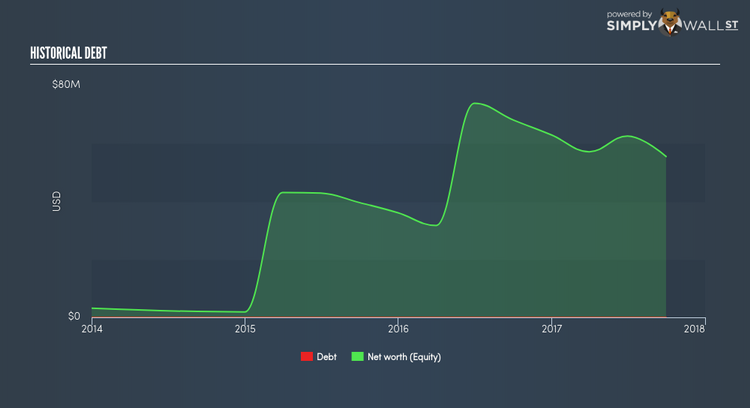Has Aeglea Biotherapeutics Inc (NASDAQ:AGLE) Got Enough Cash To Cover Its Short-Term Obligations?

Aeglea Biotherapeutics Inc (NASDAQ:AGLE), which has zero-debt on its balance sheet, can maximize capital returns by increasing debt due to its lower cost of capital. However, the trade-off is AGLE will have to follow strict debt obligations which will reduce its financial flexibility. While zero-debt makes the due diligence for potential investors less nerve-racking, it poses a new question: how should they assess the financial strength of such companies? I will go over a basic overview of the stock’s financial health, which I believe provides a ballpark estimate of their financial health status. See our latest analysis for Aeglea Biotherapeutics
Is AGLE right in choosing financial flexibility over lower cost of capital?
There are well-known benefits of including debt in capital structure, primarily a lower cost of capital. However, the trade-off is debtholders’ higher claim on company assets in the event of liquidation and stringent obligations around capital management. Either AGLE does not have access to cheap capital, or it may believe this trade-off is not worth it. This makes sense only if the company has a competitive edge and is growing fast off its equity capital. AGLE delivered a negative revenue growth of -23.94%. While its negative growth hardly justifies opting for zero-debt, if the decline sustains, it may find it hard to raise debt at an acceptable cost.
Does AGLE’s liquid assets cover its short-term commitments?
Given zero long-term debt on its balance sheet, Aeglea Biotherapeutics has no solvency issues, which is used to describe the company’s ability to meet its long-term obligations. However, another measure of financial health is its short-term obligations, which is known as liquidity. These include payments to suppliers, employees and other stakeholders. Looking at AGLE’s most recent $4.0M liabilities, it appears that the company has maintained a safe level of current assets to meet its obligations, with the current ratio last standing at 16.75x. Though, a ratio greater than 3x may be considered as too high, as AGLE could be holding too much capital in a low-return investment environment.
Next Steps:
Are you a shareholder? Since AGLE is a low-growth stock in terms of its revenues, not taking advantage of lower cost debt may not be the best strategy. As shareholders, you should try and determine whether this strategy is justified for AGLE, and why financial flexibility is needed at this stage in its business cycle. I suggest you take a look into a future growth analysis to examine the company’s position.
Are you a potential investor? AGLE’s health in terms of financial liquidity should ease potential investors’ concerns. However, its soft revenue growth means there’s potential to improve return on capital by taking on some debt and ramp up growth. Keep in mind I haven’t considered other factors such as how AGLE has been performing in the past. I encourage you to continue your research by taking a look at AGLE’s past performance in order to determine for yourself whether its zero-debt position is justified.
To help readers see pass the short term volatility of the financial market, we aim to bring you a long-term focused research analysis purely driven by fundamental data. Note that our analysis does not factor in the latest price sensitive company announcements.
The author is an independent contributor and at the time of publication had no position in the stocks mentioned.

